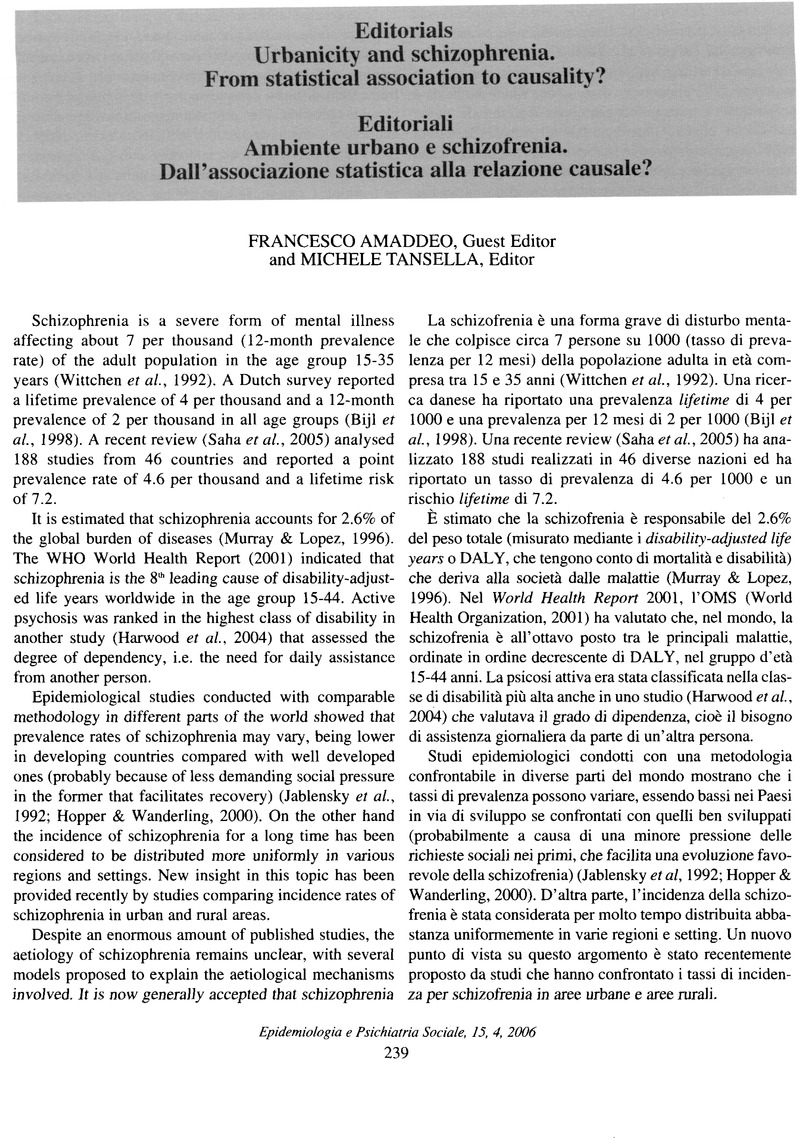Crossref Citations
This article has been cited by the following publications. This list is generated based on data provided by Crossref.
Brambilla, Paolo
and
Tansella, Michele
2007.
Can neuroimaging studies help us in understanding the biological causes of schizophrenia?.
International Review of Psychiatry,
Vol. 19,
Issue. 4,
p.
313.
Amaddeo, Francesco
and
Jones, Julia
2007.
What is the impact of socio-economic inequalities on the use of mental health services?.
Epidemiologia e Psichiatria Sociale,
Vol. 16,
Issue. 1,
p.
16.
Tandon, Rajiv
Keshavan, Matcheri S.
and
Nasrallah, Henry A.
2008.
Schizophrenia, “Just the Facts”: What we know in 2008.
Schizophrenia Research,
Vol. 100,
Issue. 1-3,
p.
4.
Amaddeo, Francesco
Donisi, Valeria
Grigoletti, Laura
and
Rossi, Alberto
2013.
Improving Mental Health Care.
p.
229.
Long, J.
Huang, G.
Liang, W.
Liang, B.
Chen, Q.
Xie, J.
Jiang, J.
and
Su, L.
2014.
The prevalence of schizophrenia in mainland China: evidence from epidemiological surveys.
Acta Psychiatrica Scandinavica,
Vol. 130,
Issue. 4,
p.
244.



